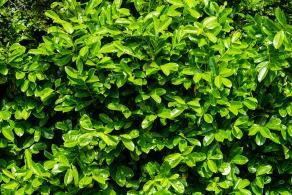Laurus Nobilis - Bay Leaf Shrub
1. Add items to basket
2. Go to the basket
3. Enter your postcode in Delivery Price Check
Pot size: 3 Litres
Hedge Guide: 4 Plants/Mtr
Plant ID: 6973 64
View plant size:Pot size: 5 Litres
Hedge Guide: 4 Plants/Mtr
Plant ID: 8817 C 64
View plant size:Plant shape: Bush
Pot size: 10 Litres
Hedge Guide: 3 Plants/Mtr
Plant ID: 5551 64
View plant size:Plant shape: Bush
Pot size: 12 Litres
Hedge Guide: 3 Plants/Mtr
Plant ID: 6972 64
View plant size:Plant shape: Bush
Pot size: 15 Litres
Hedge Guide: 3 Plants/Mtr
Plant ID: 2577 64
View plant size:Plant shape: Bush
Pot size: 18 Litres
Hedge Guide: 2 Plants/Mtr
Plant ID: 6974 64
View plant size:Plant shape: Bush
Pot size: 50 Litres
Hedge Guide: 2 Plants/Mtr
Plant ID: 647 64
View plant size:Plant shape: Bush
Pot size: 50 Litres
Hedge Guide: 2 Plants/Mtr
Plant ID: 11199 64
View plant size:Pot size: 130 Litres
Hedge Guide: 1 Plants/Mtr
Plant ID: 8938 64
View plant size:Plant shape: Mushroom
Pot size: 230 Litres
Plant ID: 11790 64
View plant size:Plant shape: Bush
Pot size: 110 Litres
Hedge Guide: 1 Plants/Mtr
Plant ID: 11099 64
View plant size:Plant shape: Bush
Pot size: 160 Litres
Hedge Guide: 1 Plants/Mtr
Plant ID: 1683 64
View plant size:Pot size: 230 Litres
Hedge Guide: 1 Plants/Mtr
Plant ID: 12097 64
View plant size:To check delivery cost add your plants to basket, then you can type your postcode in our Quick Delivery Price Check.

Laurus Nobilis or Bay Laurel Shrubs
These particular plants are an excellent foliage shrub for evergreen screening and for hedging. Laurus Nobilis has a medium rate of growth but forms a lovely dense hedge which offers excellent privacy. It will encourage wildlife into your garden as bay is especially loved by birds where they will perch and nest within the branches. Bay trees produce small yellowish blooms during April to May followed by fruits of small black berries in June to August.
Culinary Use of Bayleaf
This is an extremely important culinary herb and has been used for flavouring food for centuries. No herb garden is complete without Bayleaf! The aromatic leaves of Laurus Nobilis express a beautiful glossy, dark green colour. The leaves can be dried as Bay Leaves and used fresh or dried for cooking for their aromatic qualities.
Hedging
The Bay Laurel is very often used for hedging and these shrubs have been trained and matured as bay hedging plants. Laurus Nobilis holds its shape with just a light trimming in the summer time to maintain your desired shape. This is an excellent choice as a foliage shrub to create a natural screen. Laurus Nobilis responds well to a light clipping and can be pruned into wonderful formal shapes. It makes an ideal choice for a prominent entrance border or along your patio. You can also train your Bay Laurel as a topiary tree as it will grow wherever you trim it to. It can be managed in containers as well as with for example these twisted stem bay lollipops.
Laurus nobilis, also known as bay tree or sweet bay, is one of the oldest shrubs in cultivation. It is considered a member of evergreen shrub group, flowering in spring, with ultimate height and spread of about 7.5 metres if left unshaped or clipped. It prefers a full sun or partial shade Aspect, is generally hardy to -5OC but can tolerate colder temperatures in a sheltered position. It is considered tolerant to hardiness Zone H8 in the UK and Ireland. Container Bays will be less tolerant to cold than when planted in the ground. If it is subjected to winter damage or scorch, the affected leaves can be trimmed out and the plant recovers nicely.
Laurus Nobilis is considered an easy shrub to grow. It prefers well drained soil which retains its moisture well. Soil textures range from light sandy soils to medium loams and through to heavier clays as long as drainage is good. It can persist in slightly alkaline soils, but prefers slightly acidic to neutral pH.
It is not terribly picky regarding sunlight and can grow in semi shade and even very low sunlight. Given site selection, encourage non-exposed orientations, especially if prone to the cold and avoid direct maritime exposure. It generally can tolerate strong winds, but not extreme cold.

























